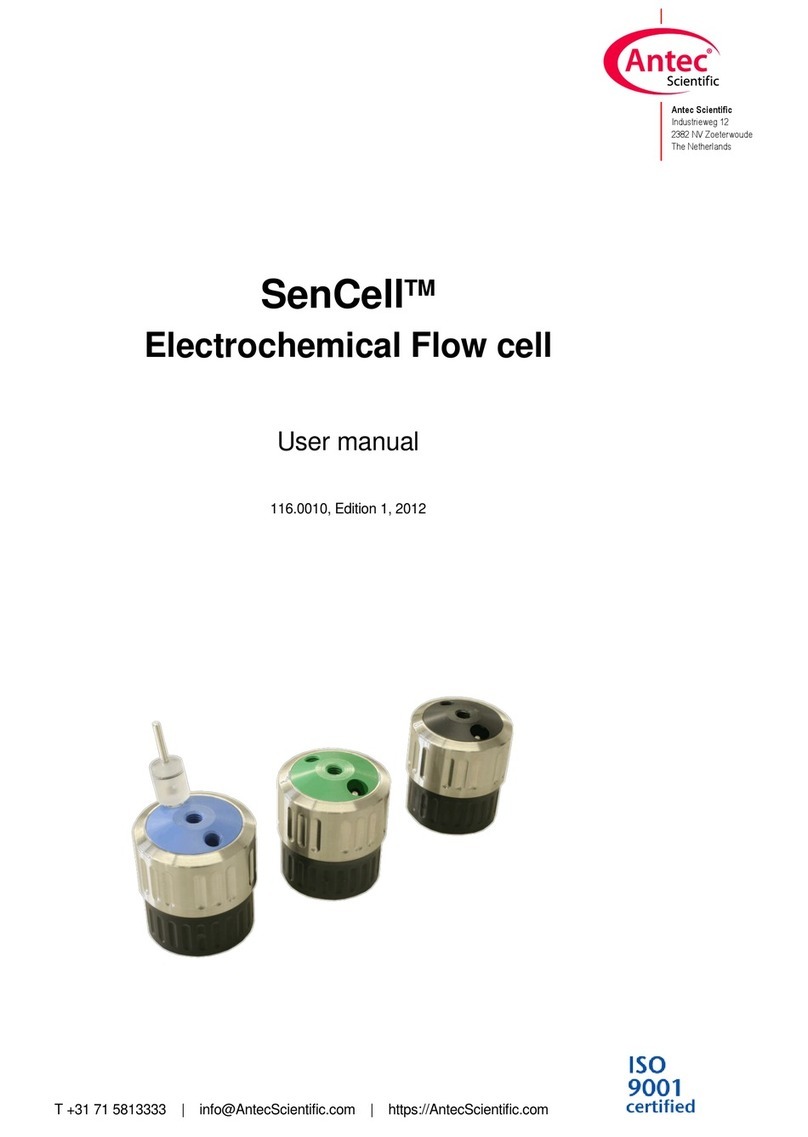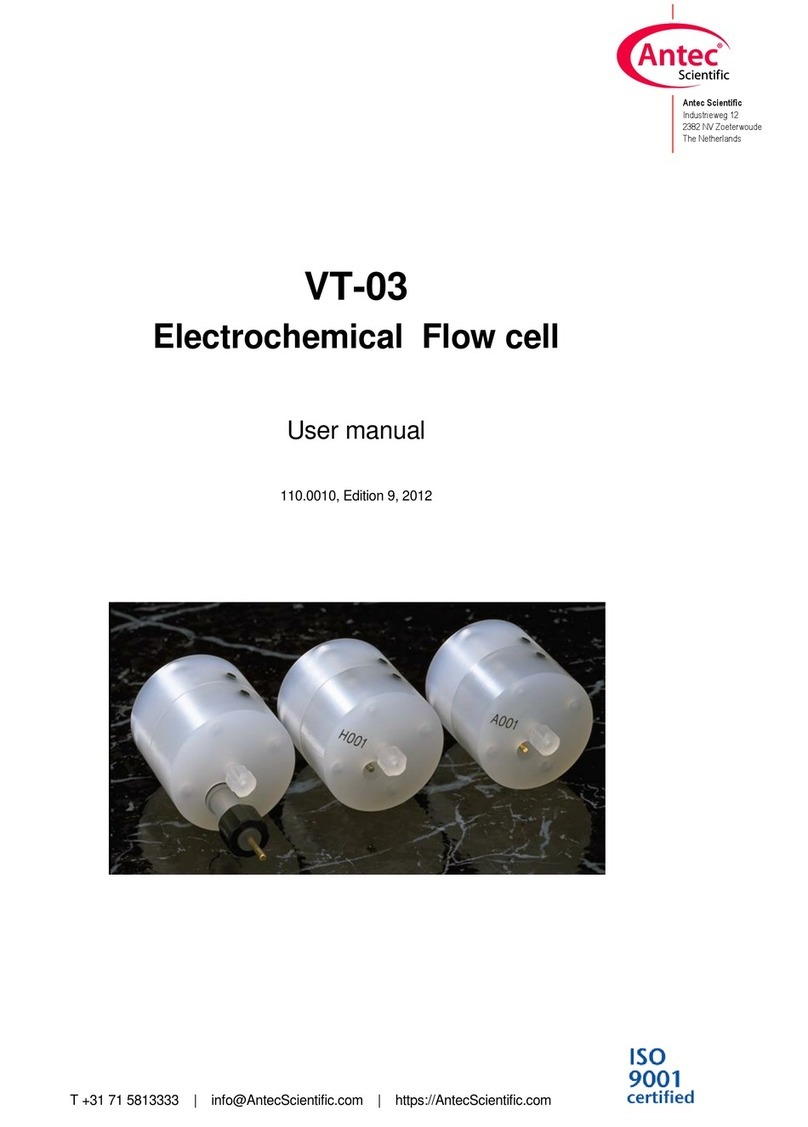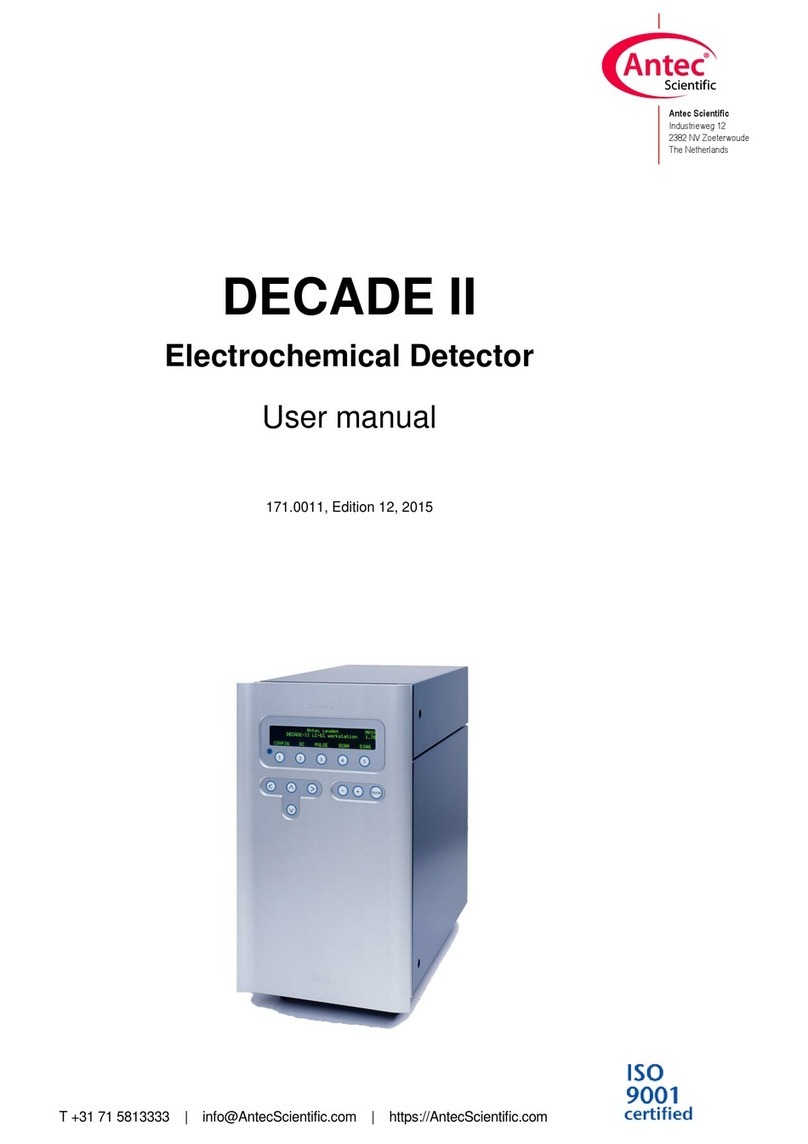. 5
Operation
To assure optimal performance keep of the flow cell we recommend that the
cell is checked regularlyand maintenance procedures are carried out.
Preventive maintenance contracts and a factorycell refurbish service are
available for that Purpose. Please contact your local dealer for more
information.
Solvents
The solvents used maybe flammable, toxic or corrosive. The room in which
the flow cell and system is installed should be well ventilated to prevent that
solvent vapors cause poisoning or ignite and cause a fire. Use of open fire in
the vicinityof this flow cell and system must be strictlyprohibited. Do not
install the flow cell and system in the same room with anyother equipment
that emits or could potentiallyemit sparks. Provide protective equipment near
the instrument, when solvent gets into the eyes or on the skin, it must be
flushed away immediately. Provide equipment, such eye wash stations and
safety showers, as close to system as possible.
Use proper eye and skin protection when working with solvents. Additional
safety requirements or protection may be necessarydepending on the
chemicals used in combination with this equipment. Make sure that you
understand the hazards associated with the chemicals used and take
appropriate measures with regards to safety and protection.
Sample containers (vials) should be sealed to minimize any risks related to
solvent vapor.
Biological Hazard
When you analyze biological fluids you need possible precautions and treat
all specimens as potentially infectious. Always wear protective
And gloves when handling toxic or biologically infectious samples to prevent
bio hazards or hazards while working with the flow cell. If necessary the flow
cell must be decontaminated before decommissioning or shipment of the cell
for repair to Antec Scientific or its representatives. When shipped to Antec
Scientific every cell has to be accompanied with a decontamination form
which should be completely filled in and signed by the customer. Without this
decontamination form the flow cell will not be processed by Antec Scientific
(either repaired or disposed).
Waste disposal
Perform periodic leak checks on LC tubing and connections. Do not close or
block the drain in the oven compartment. Do not allow flammable and/or
toxic solvents to accumulate. Follow a regulated, approved waste































